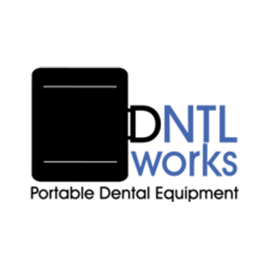
Essential Tips for Success in Mobile Dentistry
Share
Mobile dentistry is changing the way people access dental care, providing essential services to patients in schools, nursing homes, rural areas, and beyond. Whether you’re new to mobile dentistry or a seasoned professional, optimizing your setup, patient care, and operations can make all the difference. Here are the top tips for creating a successful mobile dentistry practice—along with some fun facts to inspire you!
1. Choose the Right Mobile Equipment
Investing in the right equipment is the cornerstone of mobile dentistry. A lightweight, self-contained unit that provides suction, water, and compressed air without requiring external hookups will make your practice more efficient and adaptable. Here’s a quick comparison of essential features for mobile dental units:
| Feature | Benefit |
|---|---|
| Self-Contained Water Supply | Allows setup in locations without direct plumbing |
| Powerful Suction System | Supports high-volume evacuation for efficient procedures |
| Portable Compressor | Provides air for handpieces, essential for a range of treatments |
| Noise Reduction | Creates a comfortable environment for patients |
Fun Fact: Did you know that self-contained mobile dental units can weigh as little as 25 pounds? That’s about the weight of a small dog, making them easy to transport and set up in different locations!
2. Streamline Your Setup and Teardown Process
Efficiency is crucial in mobile dentistry. Developing a quick setup and teardown routine can save time and allow you to focus on patient care. Here’s a checklist to keep your process smooth:
- Pre-Check: Inspect all equipment and supplies the day before your visit.
- On-Site Setup: Start with sanitation, positioning, and power sources. Set up equipment in the order of use.
- Teardown: Sanitize equipment, safely pack supplies, and perform a final checklist to ensure nothing is left behind.
Tip: Consider labeling bags or containers for specific items—such as "sanitation" or "tools"—to speed up setup and teardown time.
3. Stay Flexible to Adapt to Different Locations
Mobile dentistry often means working in non-traditional settings, such as community centers, schools, or outdoor events. Each location has unique challenges, so flexibility is key. Here are some quick adaptations to make your setup work in any environment:
- Bring Portable Lighting: Lighting in schools or gyms may not be ideal for dental work. A small, portable LED light can be a lifesaver.
- Use Compact and Stackable Equipment: Compact chairs, tables, and instrument trays help you make the most of limited space.
- Prepare for Power Variability: For locations without reliable power, consider a battery backup or small generator to keep equipment running smoothly.
Mobile Dentistry Setup Essentials
Insight: Having a mix of portable essentials like lighting, suction, and compact equipment makes it easier to adapt to different settings and provide high-quality care anywhere.
4. Prioritize Patient Comfort and Communication
Mobile dentistry can be intimidating for patients who aren’t used to receiving care outside a traditional office. Taking steps to create a comfortable, reassuring environment helps put patients at ease.
- Explain the Setup: A quick introduction to the mobile unit and how it works can make patients feel more comfortable.
- Minimize Noise: Use low-noise equipment and consider offering headphones to patients sensitive to sound.
- Comfortable Seating: Portable chairs with adequate support can improve patient comfort during procedures.
Fun Fact: Studies show that patients feel 30% more relaxed when they’re informed about what to expect, which can make mobile treatments smoother and more effective!
5. Build a Strong Network in the Community
Mobile dentistry is about making care accessible, so it’s important to build strong connections within the community. Partner with schools, senior centers, and local health organizations to expand your reach and establish a trusted presence.
Tip: Hosting informational sessions or free check-up events can introduce your services to the community and build goodwill. Patients are more likely to trust a provider they see as actively engaged in community health.
6. Focus on Preventive Care Education
Mobile dentistry provides an excellent opportunity to educate patients on preventive care, especially in underserved areas. Offering guidance on brushing, flossing, and diet can have a long-term impact on oral health and reduce the need for future treatments.
Top Preventive Care Tips for Mobile Dentistry Patients
Takeaway: Educating patients about preventive care empowers them to maintain good oral health, reducing the need for intensive treatments. A few extra minutes of guidance can make a big difference!
Conclusion
Mobile dentistry offers a unique and flexible way to deliver dental care, and with the right approach, you can make a significant impact in communities with limited access to oral health services. By choosing the right equipment, streamlining your setup, adapting to different environments, and prioritizing patient comfort, you can create a successful mobile practice that truly benefits the community.
Interested in more mobile dentistry insights? Follow our blog for the latest tips, innovations, and success stories from mobile dental professionals!
